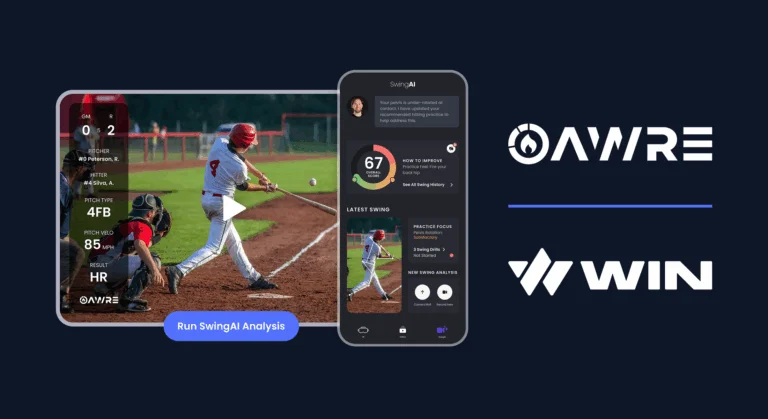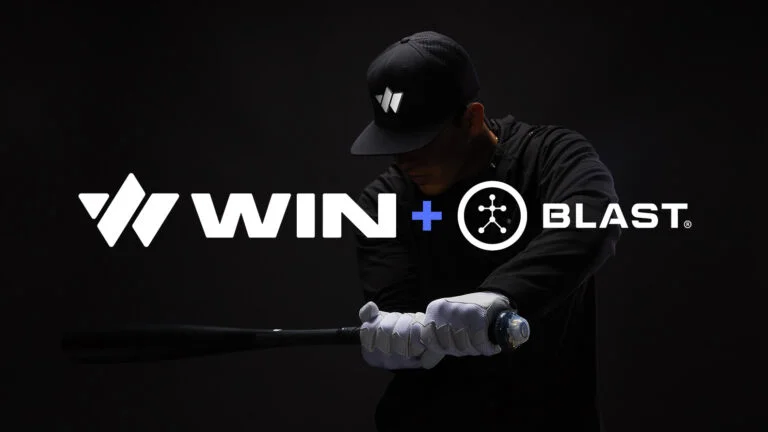Every baseball player dreams of hitting the ball farther—watching it soar over the outfield fence for a home run is one of the most rewarding moments in the sport. However, young players often adopt bad habits, like dropping their back shoulder, trying to lift the ball, or swinging too hard, thinking it will help them hit the ball farther. These misconceptions can compromise their swing mechanics and decrease power and consistency at the plate.
The Short Answer: To hit a baseball farther, focus on increasing your bat speed, squaring up the ball consistently, and cleaning up your weight transfer in your swing. Combining a good swing, physical strength, and consistent practice will help you drive the ball.
The Science Behind Hitting a Baseball Far
To understand how to hit a baseball farther, we need to dive into the science of hitting—specifically, exit velocity and kinetic energy.
What is Exit Velocity?
Exit velocity refers to the speed of the baseball as it comes off the bat after contact. The faster the ball travels off the bat, the farther it will fly. Professional baseball players often achieve exit velocities over 100 mph, which allows for towering home runs. Exit velocity is a product of bat speed and the efficiency of the bat-ball collision.
Kinetic Energy and Distance
When you swing your bat, you transfer kinetic energy to the baseball. The more energy you generate through swing speed and solid mechanics, the harder the ball is hit. By increasing the initial velocity of the ball (how fast it leaves the bat), you maximize the distance it travels.
Key Factors Influencing Distance
When it comes to hitting a baseball farther, two key factors play a pivotal role: increasing initial velocity and optimizing the bat-ball collision. The force of a hit depends heavily on the speed of the bat as it meets the ball and the efficiency of energy transfer during contact. Achieving greater initial velocity requires generating maximum bat speed while maintaining control and proper technique. Equally important is hitting the ball on the sweet spot of the bat, where energy transfer is most efficient, minimizing vibrations and maximizing power. This combination of speed and precision ensures the ball leaves the bat with maximum exit velocity, resulting in greater distance.
Pitch speed and type also significantly influence how far a ball can travel. Faster pitches provide more energy for the batter to redirect, increasing the potential distance of a well-hit ball. Conversely, slower pitches require the hitter to generate more power independently, emphasizing the importance of strong swing mechanics. While the size of the player can impact raw power, it isn’t the sole determinant of how far a ball can be hit. Proper technique, efficient energy transfer, and consistent practice often allow smaller players to hit just as far, proving that size is less critical than precision, bat speed, and an optimized swing.
GET STARTED WITH WIN REALITYHitting a Baseball Farther: Key Aspects of Your Swing to Focus on
Improving your swing mechanics is essential for increasing power and distance. Here are the key elements to focus on:
1. Bat Speed
Bat speed directly impacts exit velocity. Faster swings create greater energy transfer, leading to harder-hit balls and longer distances. This doesn’t mean swinging harder—it’s about being as quick to the ball as possible in the right bat path. Developing explosive bat speed through drills and strength training is crucial.
2. Weight Transfer
Proper weight transfer is the foundation of a powerful swing. Start with your weight evenly balanced, then shift it to your back foot, coiling through your back hip as you load up. Properly loading by coiling around your back hip is essential for generating more power. As you swing, transfer your weight to your front foot while rotating your hips and keeping the front side strong. This motion generates the torque needed for a powerful, fast swing.
3. Bat Weight and Type
Choosing the right bat can make a significant difference:
- Lighter Bats: Allow for faster swing speeds, which can help generate exit velocity.
- Heavier Bats: Can produce more power but require more strength to swing effectively.
- Bat Material: Aluminum and composite bats often have larger sweet spots and greater exit velocity compared to wooden bats. However, wooden bats over time will make you better at squaring the ball up.
4. Contact Point
Making contact at the ideal point, in terms of depth and on the bat is crucial for hitting for power. This means maintaining the proper bat path to stay inside the ball, square it up, and create backspin. Good timing and bat path are essential for maximizing distance.
5. Hard Work and Repetition
Hitting a baseball farther doesn’t happen overnight. Repeated practice of proper mechanics is key. Focus on refining your swing through drills and batting practice, gradually building consistency and strength.
Our Favorite Drills for Hitting a Baseball Farther
Here are some effective drills to improve swing speed, bat control, and exit velocity. These drills are great for players of all ages and skill levels.
1. Torque Drill
- How to Do It: Begin in a foot strike position, with your back foot turned heel-up toward the catcher and your hips aligned toward the pitcher. Pull the knob of the bat back toward the catcher to create tension, ensuring your chest is over your back knee and the plate. To start the swing sequence, drive your pelvis forward, followed by the knob of the bat, and finish with your upper torso driving through the motion.
- Benefits: Enhances proper sequencing, promotes hip-shoulder separation, and boosts bat speed.
2. Rear Leg Swing Drill
- How to Do It: Begin with your stance open at a 45-degree angle, coiling properly into your back hip by rotating your back pocket toward the pitcher as you lift your front foot. Initiate the swing by firing your hips forward first, followed by driving the knob of the bat straight to the ball. Focus on keeping your body positioned behind the ball to maintain balance and generate maximum power.
- Benefits: Reinforces proper loading mechanics and sequencing while improving swing consistency.
3. Overload/Underload Training
- How to Do It: Alternate between swinging a heavier bat (overload) and a lighter bat (underload) during batting practice.
- Benefits: Develops bat speed and strength, helping you swing faster with your regular bat.
4. Walk Up Drill
- How to Do It: Begin behind home plate and step left, right, then left again, walking into the ball. This drill helps shift momentum off the backside and through the ball for a more powerful swing.
- Benefits: This drill helps hitters who tend to be stiff and struggle to create rhythm in their swing and get stuck on their backside. This will help hitters who need to move fast and build bat speed.
5. Med Ball Scoop Toss
- How to Do It: Hold a medicine ball at your back hip or your chest and perform explosive rotational throws against a wall, focusing on hip rotation and core power.
- Benefits: Builds rotational strength and explosiveness, critical for powerful swings.
Implementing these exercises consistently will lead to significant improvements in power and swing mechanics.
How WIN Reality Can Help You Hone Your Hitting Skills
While traditional baseball drills are essential for building strong fundamentals, integrating cutting-edge technology like WIN Reality can accelerate a hitter’s growth in ways that conventional methods alone cannot. WIN Reality’s Player Development Platform offers a comprehensive solution to strengthen every element of a good hitter’s swing.
By simulating game-speed pitching in a virtual reality environment, hitters can train against realistic scenarios to transfer bat speed to game scenarios, perfect their timing, and improve their ability to adjust to different pitch types. This immersive experience offers hitters the unique advantage of training against live pitching year-round. Coupled with the mobile app, players and coaches can track progress, review stats, and set measurable goals, such as boosting exit velocity and improving consistency.
The revolutionary SwingAI Trainer, integrated into WIN Reality’s mobile app, provides in-depth swing analysis through a simple “in-range” or “out-of-range” feedback system. This tool identifies inefficiencies in a hitter’s mechanics and offers personalized drills to target specific areas for improvement. Acting like a personal swing coach, SwingAI helps hitters make data-informed adjustments while tracking their progress over time. It even alerts players when key swing components fall out of range, proactively addressing potential slumps before they develop.With this suite of innovative tools, WIN Reality empowers hitters of all ages and skill levels to take their performance to the next level. Explore our pricing options to find the best fit for your training needs and watch as your players gain confidence, improve their skills, and thrive at the plate. Transform your hitting development today with WIN Reality.
GET STARTED WITH WIN REALITY


